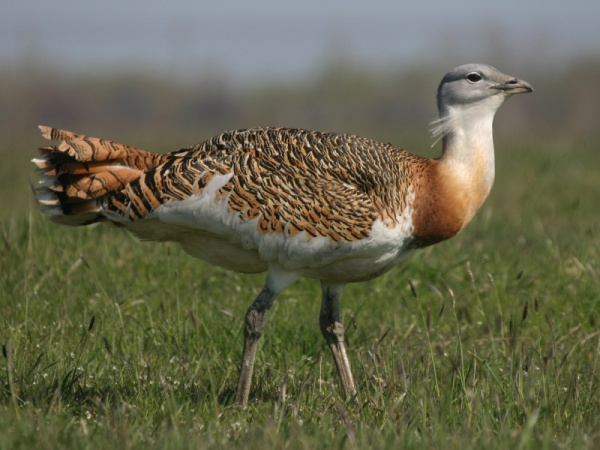Facts About Great bustard
The great bustard, a distinctive bird from the bustard family and the sole member of the genus Otis, flourishes in open grasslands and farmlands extending from Morocco to East Asia. Unfortunately, it has been classified as Vulnerable on the IUCN Red List since 1996. While most European great bustards are resident throughout the year, their Asian counterparts migrate southward during the winter. Spain and Portugal collectively host about 60% of the global population, with England witnessing some success in reintroduction efforts.
The scientific study of the great bustard began with Carl Linnaeus in 1758, and its name has roots in Ancient Greek and Latin. The great bustard is notable for its pronounced sexual dimorphism, with males being significantly larger than females. It ranks among the heaviest flying birds, featuring an impressive wingspan and weight.
Great bustards have a preference for grasslands and steppes, frequently inhabiting areas with both wild and cultivated crops, as well as abundant insect populations. They are social animals, often forming separate groups of males and females outside the breeding season. During the mating season, males engage in elaborate displays to assert dominance and attract females. These birds are omnivores, and their diet varies with the seasons.
Their population is widespread across several regions, with significant numbers found in Spain, Russia, Turkey, Portugal, and Mongolia. However, they face numerous threats, including habitat loss, human disturbances, predation, and collisions with infrastructure. Conservation efforts, such as reintroduction projects and protective measures in countries like Hungary, are essential for their continued survival.

 Egypt
Egypt